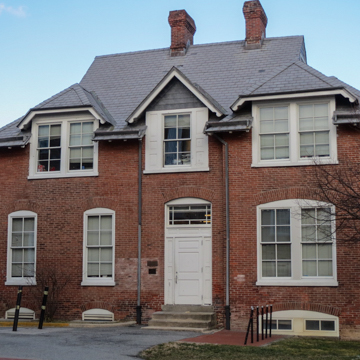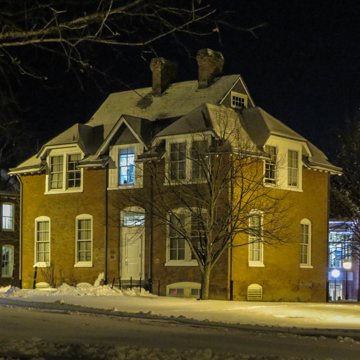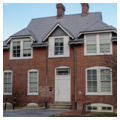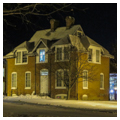You are here
Recitation Hall Annex (Agricultural Experiment Station)
The college expanded in the 1880s with federal funds, as the Hatch Act made money available for the establishment of an agricultural experiment station. This 43 × 27–foot brick building in Queen Anne style has wrongly been attributed to Frank Furness, confusing it with next-door Recitation Hall (NK9.3); it does closely resemble some Furness designs, however. The architect, Springer, remains obscure, except for having bid unsuccessfully on a Delaware State Hospital job (NC1) in 1895. Chemical laboratories occupied much of the first floor, with the director's office slightly projecting at right of the front door. Upstairs were botanical, bacteriological, and entomological laboratories, plus a darkroom. Nearby stand two unassuming brick buildings, Mechanical and Electrical Hall (1898, Frank R. Carswell; enlarged 1904 and 1911; restored 2003), once home to the engineering department, and Taylor Hall, built as a gymnasium (1905–1906, Robeson Lea Perot).
Writing Credits
If SAH Archipedia has been useful to you, please consider supporting it.
SAH Archipedia tells the story of the United States through its buildings, landscapes, and cities. This freely available resource empowers the public with authoritative knowledge that deepens their understanding and appreciation of the built environment. But the Society of Architectural Historians, which created SAH Archipedia with University of Virginia Press, needs your support to maintain the high-caliber research, writing, photography, cartography, editing, design, and programming that make SAH Archipedia a trusted online resource available to all who value the history of place, heritage tourism, and learning.





